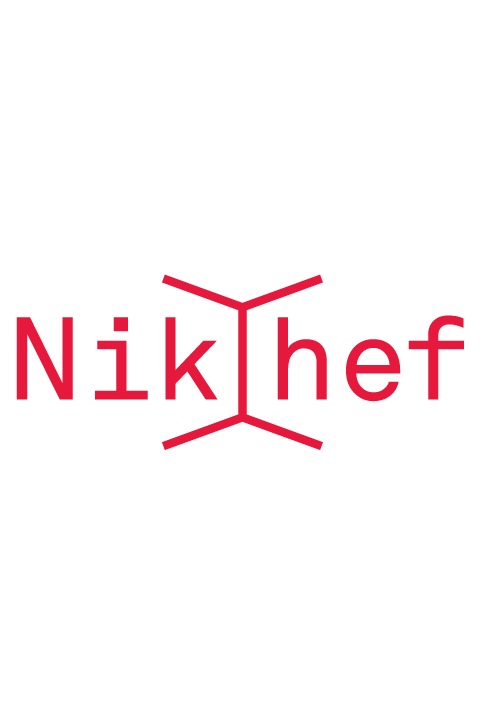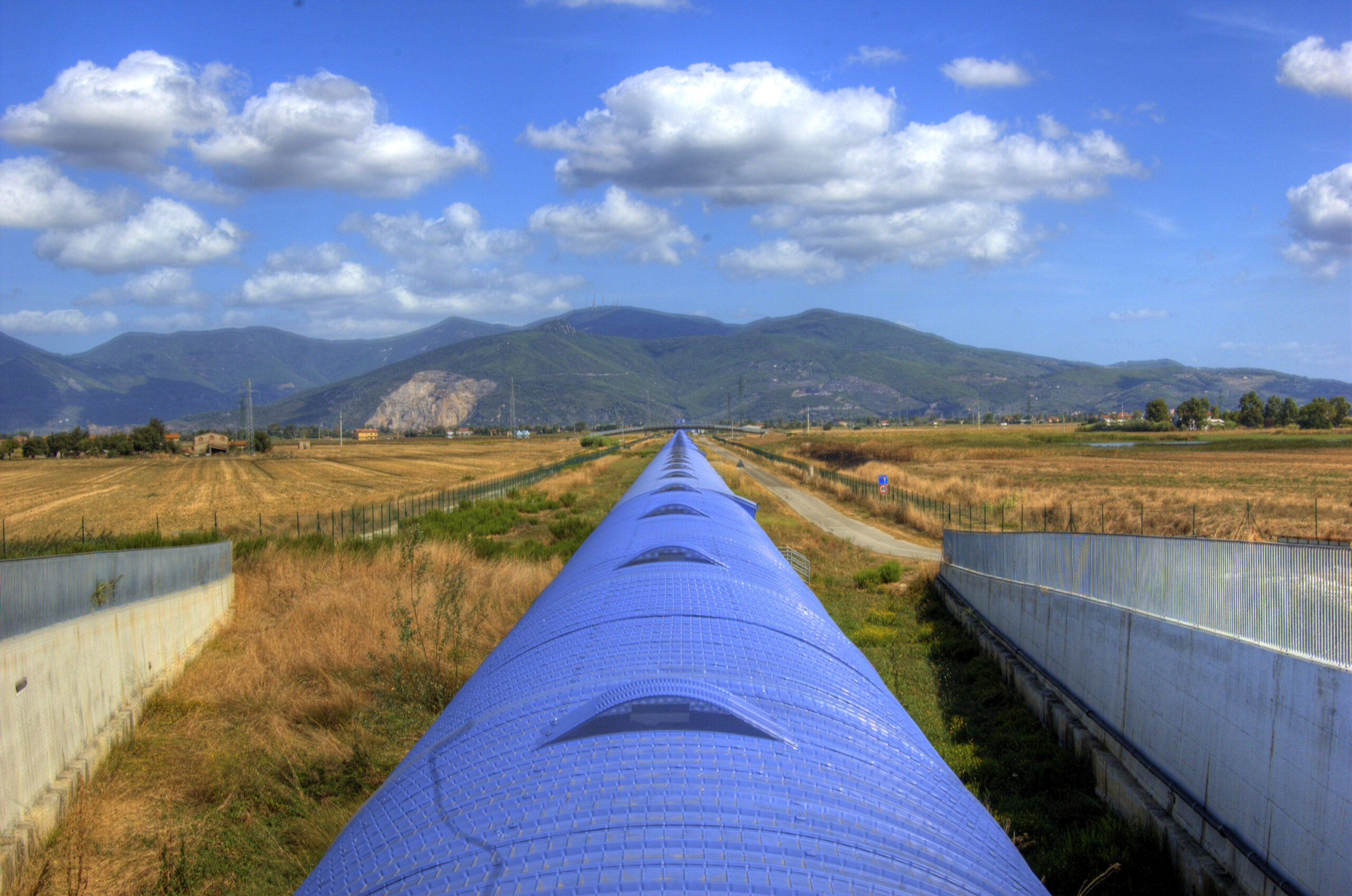De eerste metingen van de ruimtetijdtrillingen van twee botsende zwarte gaten in het heelal waren in 2015 nog wereldnieuws, maar vanaf vandaag zijn zulke botsingen vermoedelijk wekelijks te meten. De zwaartekrachtsgolfdetectoren Virgo in Italië en LIGO in Washington en Louisiana beginnen maandagmiddag 1 april om 15.00 uur aan een nieuwe meetcampagne die een vol jaar duurt. Sinds de vorige meetperiode zijn de drie detectoren voor zwaartekrachtsgolven technisch zodanig verbeterd dat vermoedelijk wekelijks een versmelting van twee zwarte gaten kan worden waargenomen.
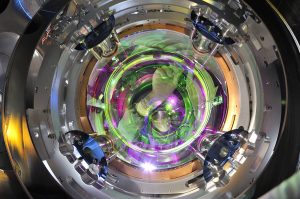
Virgo en LIGO zijn gebouwd om de trillingen in de ruimtetijd te detecteren die werden voorspeld door Einsteins Algemene Relativiteitstheorie in 1916. Bij heftige kosmische gebeurtenissen als botsingen van extreem compacte massa’s voorspelt de theorie trillingen in de ruimtetijd die meetbaar kunnen zijn tot grote afstand. Afstanden tussen objecten zullen daardoor afwisselend een fractie groter en kleiner worden als de trilling de aarde passeert.
De Virgo- en LIGO-detectoren gebruiken een techniek waarbij laserstralen de afstand tussen spiegels meten in twee kilometers lange tunnels die haaks op elkaar staan. Met dergelijke laserinterferometers zijn variaties van minder dan een protondiameter te meten, mits alle achtergrondruis uit de omgeving wordt weggefilterd. Tot augustus 2017 werden er meer dan tien zwaartekrachtsgolven waargenomen, van botsende zwarte gaten en ook van botsende neutronensterren. Sindsdien is intensief aan verbeteringen van het meetnetwerk gewerkt. Nikhef is nauw betrokken bij de Virgo-detector bij Pisa in Italië. Prof. Jo van den Brand van Nikhef en VU Amsterdam is spokesperson voor het project.
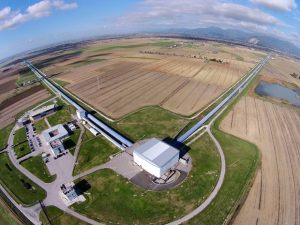
LIGO en Virgo beginnen na wekenlange tests volgens plannen op 1 april aan een nieuwe ononderbroken meetperiode van een jaar. Een grote uitdaging, zegt directeur prof. Stavros Katsanevas van het European Gravitational Observatory EGO, dat buiten Pisa de Virgo-detector huisvest. ‘Gedurende een jaar 24 uur per dag foutloos in bedrijf blijven is een nieuwe stap na de pioniersfase waarin we de eerste observaties deden. Maar ik heb vertrouwen dat dit lukt.’
Vergeleken met de voorgaande meetperiode O2 is de gevoeligheid van Virgo ongeveer verdubbeld. Die gevoeligheid wordt doorgaans uitgedrukt in de afstand dat de detector een versmelting van twee neutronensterren nog zal waarnemen. Dat was 88 miljoen lichtjaar en wordt nu het dubbele. Daarmee wordt het volume van het heelal dat ermee bekeken kan worden achtmaal zo groot. Gezien de eerdere waarnemingen kan dat betekenen dat eens in de week een signaal wordt gevonden.
De hogere gevoeligheid van Virgo is met een reeks verbeteringen bereikt. De zware spiegels in de laserinterferometer zijn niet langer opgehangen aan stalen kabels, maar aan glasvezels. Daardoor is er minder ruis in de lage frequenties en kunnen daar ruimtetijdtrillingen beter worden opgevangen. De bronlaser van Virgo is ook krachtiger dan in de eerdere meetronde.
Voor het eerst wordt in Virgo ook gebruik gemaakt van een techniek van het Albert Einstein-instituut in Hannover om het effect van het laserlicht zelf op de spiegels te onderdrukken, zogeheten vacuüm state squeezing. Daarbij worden de quantumeigenschappen van licht slim benut om de gevoeligheid bij hoge frequenties te verbeteren.
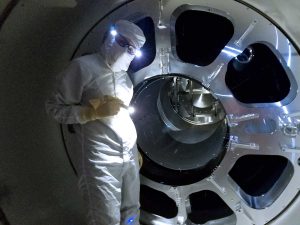
Inmiddels is in Japan de ondergrondse KAGRA-detector in voorbereiding. Die zou in de tweede helft van het komende meetjaar kunnen aanhaken bij LIGO-Virgo, zodat een echt wereldomspannend meetnetwerk wordt bereikt. Via driehoeksmeting is de bron van een zwaartekrachtsgolf dan nog veel exacter aan de hemel te lokaliseren.
BNR Nieuwsradio besteedde donderdag 27 maart aandacht aan de hernieuwde jacht op zwaartekrachtsgolven.
Het originele (engelstalige) persbericht van LIGO-Virgo:
GRAVITATIONAL WAVE DETECTORS JOIN FORCES FOR A NEW YEAR-LONG SIGNAL HUNT
Cascina (Pisa, Italy) – The Virgo and LIGO detectors are ready to start the new Observing run called O3, lasting a whole year. The hunt for gravitational waves is set to start on April 1st when the European Virgo detector, based in Italy at the European Gravitational Observatory (EGO), and the LIGO twin detectors, located in the state of Washington and Louisiana (USA), will start to take data becoming together the most sensitive gravitational wave observatory to date.
During a one-year period the LIGO and Virgo Collaborations will register science data continuously, and the three detectors will operate as a global observatory. Since August 2017, the end of the second observation run O2, the two collaborations have intensively worked on their interferometers to improve the sensitivity and reliability. Scientists have also improved their offline and online data analysis and developed further the procedures for releasing Open Public Alerts: these will within minutes notify the physics and astronomy community when a potential gravitational-wave event is observed.
“With our three detectors now operational at a significantly improved sensitivity, the global LIGO-Virgo detector network is expected to make several new detections. Moreover it will allow precise triangulation of the sources of gravitational waves. This will be an important step towards our quest of multi-messenger astronomy”, says Jo van den Brand of Nikhef (the Dutch National Institute for Subatomic Physics) and VU University Amsterdam, who is the spokesperson for the Virgo collaboration.
“Going from the pioneering era that lead to the historical discovery to the present observatory era, where the interferometer and the infrastructure will have to operate faultlessly for 24 hours, seven days in a week for a whole year was and continues to be a daunting challenge;” says Stavros Katsanevas, Director of EGO, “I have confidence however that we will face this challenge with the same success we faced the previous one.”
The detector sensitivity is commonly given in terms of the distance at which it can observe the merger of a binary neutron star system. “During O2 Advanced Virgo could observe neutron star events up to a distance of 88 million light years”, says Alessio Rocchi, researcher at INFN and Virgo’s commissioning coordinator. “Both LIGO and Virgo Collaborations have been working to improve the sensitivity of the detectors, also exploiting the upgrades installed on the interferometers. With respect to O2, the Virgo sensitivity has improved by about a factor of 2, which means that the volume of the observable Universe has increased by a factor of 8″, concludes Rocchi.
“The quality of the data collected by the instruments is a determining factor to detect gravitational-wave signals buried into noise and to measure their properties”, said Nicolas Arnaud, CNRS researcher currently seconded to EGO and Virgo detector characterization coordinator. “A lot of progress has been made in that direction since O2, thanks to the combined effort of the collaboration as a whole, from the instrumentalists to the data analysts”.
The scientific outcome of observation run O3 is expected to be tremendous and it will potentially reveal new exciting signals coming from new sources such as the merger of mixed binaries made by a black hole and a neutron star. O3 will also target long lasting gravitational waves produced for instance by spinning neutron stars which are not symmetric with respect to their axis; however, the detection of such signals is still an enormous challenge and the LIGO and Virgo Collaborations are raising up to it.
Furthermore, thanks to the upgrades of Virgo and LIGO, signals for the merger of binary black holes, such as for GW150914 the first gravitational-wave event ever detected, are expected to become quite common, perhaps up to one per week. Scientists also expect to observe several binary neutron star mergers, such as GW170817 which opened the era of multi-messenger astronomy as well as providing insights into binary evolution, nuclear physics, cosmology and fundamental physics.
“The new software we have built is able to send Open Public Alerts within five minutes”, says Sarah Antier, postdoc at the Université Paris Diderot and responsible of the low latency program for the Virgo Collaboration. “This will allow to follow-up the gravitational wave signal with neutrino and/or electromagnetic searches, that may lead to multi-messenger discoveries. Observations of many signals as we expect during O3 will give us a census of the population of stellar mass remnants and a better understanding of the violent universe.”
Since August 2017 both LIGO and Virgo have been updated and tested. In particular Virgo has fully replaced the steel wires which were used in O2 to suspend the four main mirrors of the 3 km long interferometer: the mirrors are now suspended with thin fused-silica (‘glass’) fibres, a procedure which has allowed to increase the sensitivity in the low-medium frequency region, and has a dramatic impact in the capabilities to detect mergers of compact binary systems. A second major upgrade was the installation of a more powerful laser source, which improves the sensitivity at high frequencies. Last but not least squeezed vacuum states are now injected into Advanced Virgo, thanks also to a collaboration with the Albert Einstein Institute in Hannover, Germany. This technique takes advantage of the quantum nature of light and improves the sensitivity at high frequencies.
Squeezing is a major upgrade also implemented in the two LIGO interferometers in the US for this next observation run. Moreover, the laser power has been doubled to more precisely measure the effect of passing gravitational waves. Other upgrades were made to LIGO’s mirrors at both locations, with a total of five of eight mirrors being swapped out for better-performing versions.
“We had to break the fibers holding the mirrors and very carefully take out the optics and replace them,” says Calum Torrie, LIGO’s mechanical-optical engineering head at Caltech. “It was an enormous engineering undertaking.”
During O3 the LIGO and Virgo Collaborations will continue to communicate new findings to the scientific community as well as to the general public. Furthermore scientists will keep on extracting all possible physics results from the data.
The global LIGO-Virgo network will provide prompt localizations of gravitational-wave signals and will release confident events publicly through the Open Public Alert system to maximize the science that the entire scientific community can do with the gravitational-wave detections and to minimize the chance of missing any electromagnetic or neutrino counterparts.
The Japanese detector KAGRA is expected to join the global LIGO-Virgo network in the last part of O3, extending the detection and pointing capabilities of the global network.
LIGO is funded by NSF and operated by Caltech and MIT, which conceived of LIGO and led the Initial and Advanced LIGO projects. Financial support for the Advanced LIGO project was led by the NSF with Germany (Max Planck Society), the U.K. (Science and Technology Facilities Council) and Australia (Australian Research Council-OzGrav) making significant commitments and contributions to the project. Nearly 1,300 scientists from around the world participate in the effort through the LIGO Scientific Collaboration, which includes the GEO Collaboration. A list of additional partners is available at https://my.ligo.org/census.php.
The Virgo Collaboration is currently composed of approximately 350 scientists, engineers, and technicians from about 70 institutes from Belgium, France, Germany, Hungary, Italy, the Netherlands, Poland, and Spain. The European Gravitational Observatory (EGO) hosts the Virgo detector near Pisa in Italy, and is funded by Centre National de la Recherche Scientifique (CNRS) in France, the Istituto Nazionale di Fisica Nucleare (INFN) in Italy, and Nikhef in the Netherlands. A list of the Virgo Collaboration groups can be found at http://public.virgo-gw.eu/the-virgo-collaboration/. More information is available on the Virgo website at http://www.virgo-gw.eu
